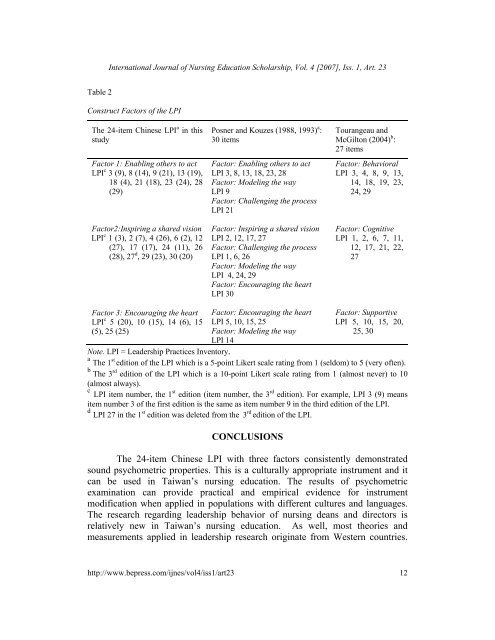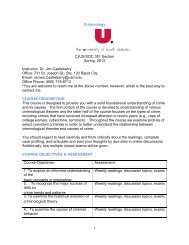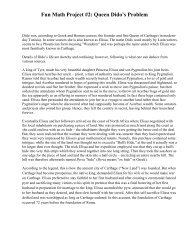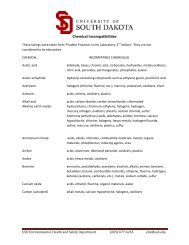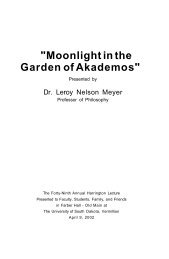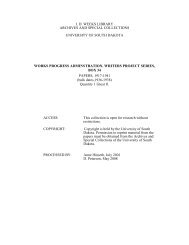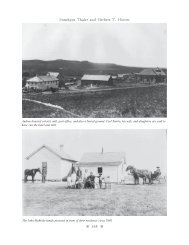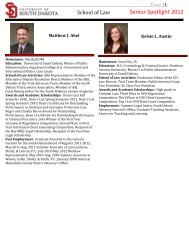Psychometric Properties of the Chinese Leadership Practices ...
Psychometric Properties of the Chinese Leadership Practices ...
Psychometric Properties of the Chinese Leadership Practices ...
You also want an ePaper? Increase the reach of your titles
YUMPU automatically turns print PDFs into web optimized ePapers that Google loves.
Table 2<br />
International Journal <strong>of</strong> Nursing Education Scholarship, Vol. 4 [2007], Iss. 1, Art. 23<br />
Construct Factors <strong>of</strong> <strong>the</strong> LPI<br />
The 24-item <strong>Chinese</strong> LPI a in this<br />
study<br />
Factor 1: Enabling o<strong>the</strong>rs to act<br />
LPI c 3 (9), 8 (14), 9 (21), 13 (19),<br />
18 (4), 21 (18), 23 (24), 28<br />
(29)<br />
Factor2:Inspiring a shared vision<br />
LPI c 1 (3), 2 (7), 4 (26), 6 (2), 12<br />
(27), 17 (17), 24 (11), 26<br />
(28), 27 d , 29 (23), 30 (20)<br />
Factor 3: Encouraging <strong>the</strong> heart<br />
LPI c 5 (20), 10 (15), 14 (6), 15<br />
(5), 25 (25)<br />
Posner and Kouzes (1988, 1993) a :<br />
30 items<br />
Factor: Enabling o<strong>the</strong>rs to act<br />
LPI 3, 8, 13, 18, 23, 28<br />
Factor: Modeling <strong>the</strong> way<br />
LPI 9<br />
Factor: Challenging <strong>the</strong> process<br />
LPI 21<br />
Factor: Inspiring a shared vision<br />
LPI 2, 12, 17, 27<br />
Factor: Challenging <strong>the</strong> process<br />
LPI 1, 6, 26<br />
Factor: Modeling <strong>the</strong> way<br />
LPI 4, 24, 29<br />
Factor: Encouraging <strong>the</strong> heart<br />
LPI 30<br />
Factor: Encouraging <strong>the</strong> heart<br />
LPI 5, 10, 15, 25<br />
Factor: Modeling <strong>the</strong> way<br />
LPI 14<br />
Tourangeau and<br />
McGilton (2004) b :<br />
27 items<br />
Factor: Behavioral<br />
LPI 3, 4, 8, 9, 13,<br />
14, 18, 19, 23,<br />
24, 29<br />
Factor: Cognitive<br />
LPI 1, 2, 6, 7, 11,<br />
12, 17, 21, 22,<br />
27<br />
Factor: Supportive<br />
LPI 5, 10, 15, 20,<br />
25, 30<br />
Note. LPI = <strong>Leadership</strong> <strong>Practices</strong> Inventory.<br />
a st<br />
The 1 edition <strong>of</strong> <strong>the</strong> LPI which is a 5-point Likert scale rating from 1 (seldom) to 5 (very <strong>of</strong>ten).<br />
b rd<br />
The 3 edition <strong>of</strong> <strong>the</strong> LPI which is a 10-point Likert scale rating from 1 (almost never) to 10<br />
(almost always).<br />
c st rd<br />
LPI item number, <strong>the</strong> 1 edition (item number, <strong>the</strong> 3 edition). For example, LPI 3 (9) means<br />
item number 3 <strong>of</strong> <strong>the</strong> first edition is <strong>the</strong> same as item number 9 in <strong>the</strong> third edition <strong>of</strong> <strong>the</strong> LPI.<br />
d st rd<br />
LPI 27 in <strong>the</strong> 1 edition was deleted from <strong>the</strong> 3 edition <strong>of</strong> <strong>the</strong> LPI.<br />
CONCLUSIONS<br />
The 24-item <strong>Chinese</strong> LPI with three factors consistently demonstrated<br />
sound psychometric properties. This is a culturally appropriate instrument and it<br />
can be used in Taiwan’s nursing education. The results <strong>of</strong> psychometric<br />
examination can provide practical and empirical evidence for instrument<br />
modification when applied in populations with different cultures and languages.<br />
The research regarding leadership behavior <strong>of</strong> nursing deans and directors is<br />
relatively new in Taiwan’s nursing education. As well, most <strong>the</strong>ories and<br />
measurements applied in leadership research originate from Western countries.<br />
http://www.bepress.com/ijnes/vol4/iss1/art23<br />
12


